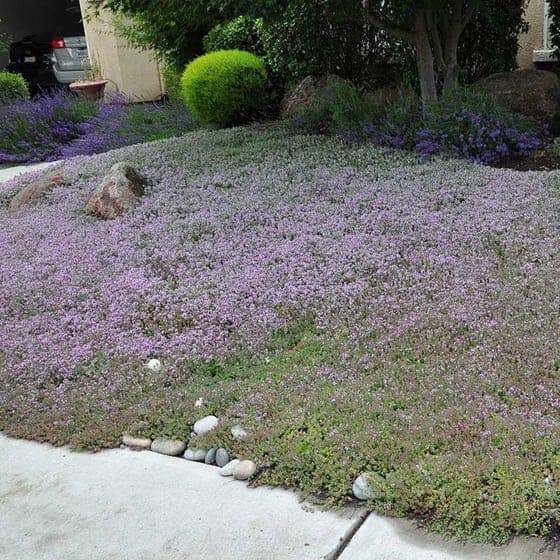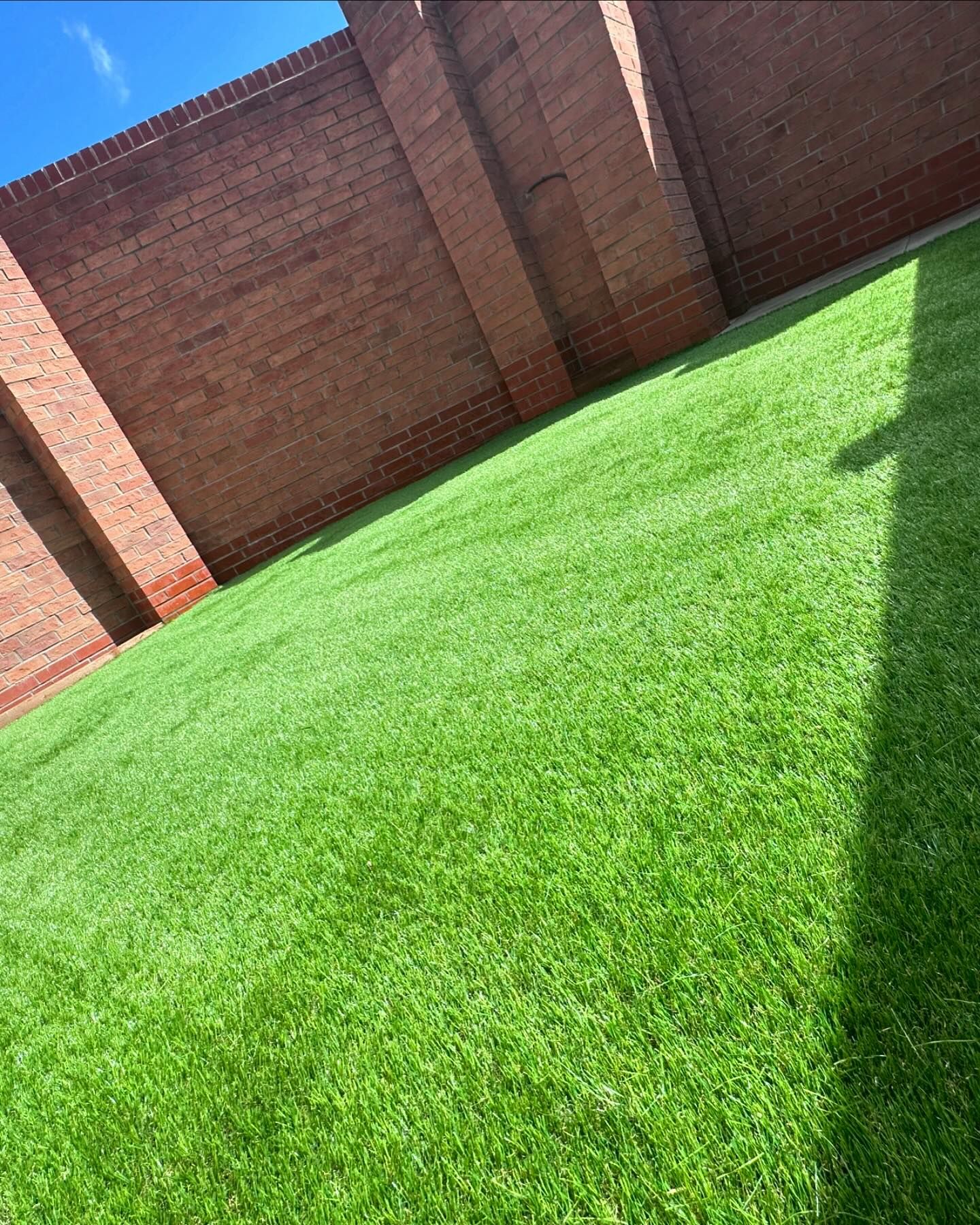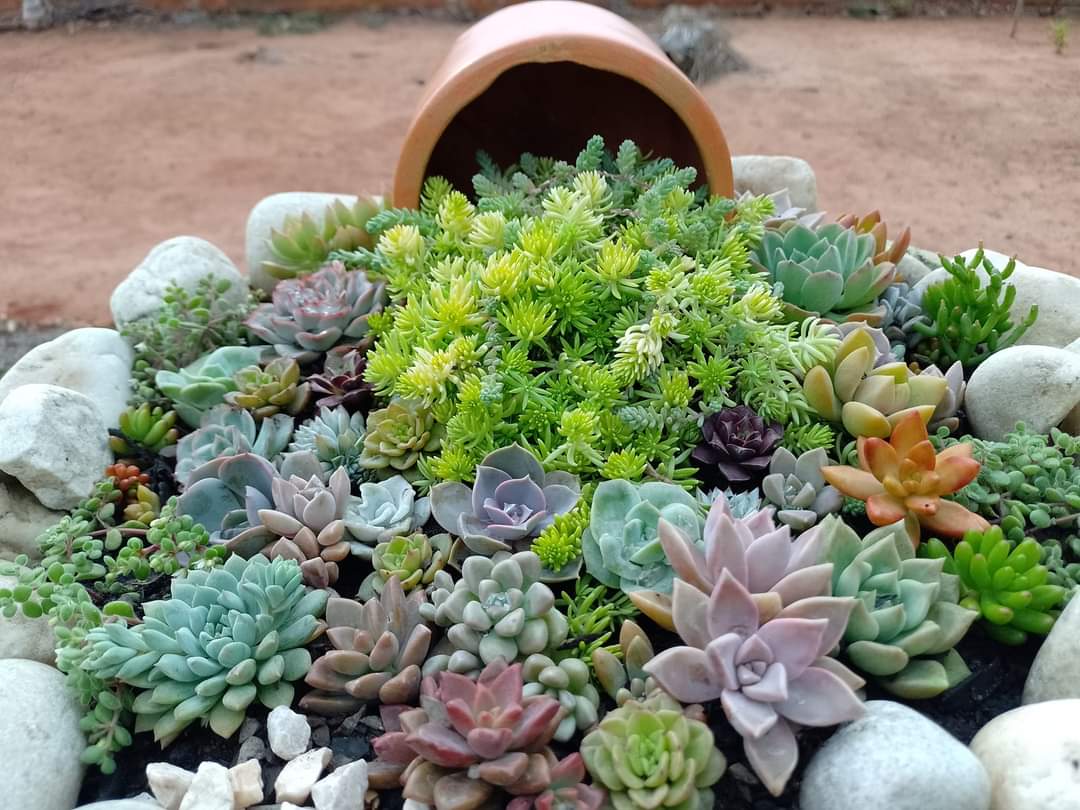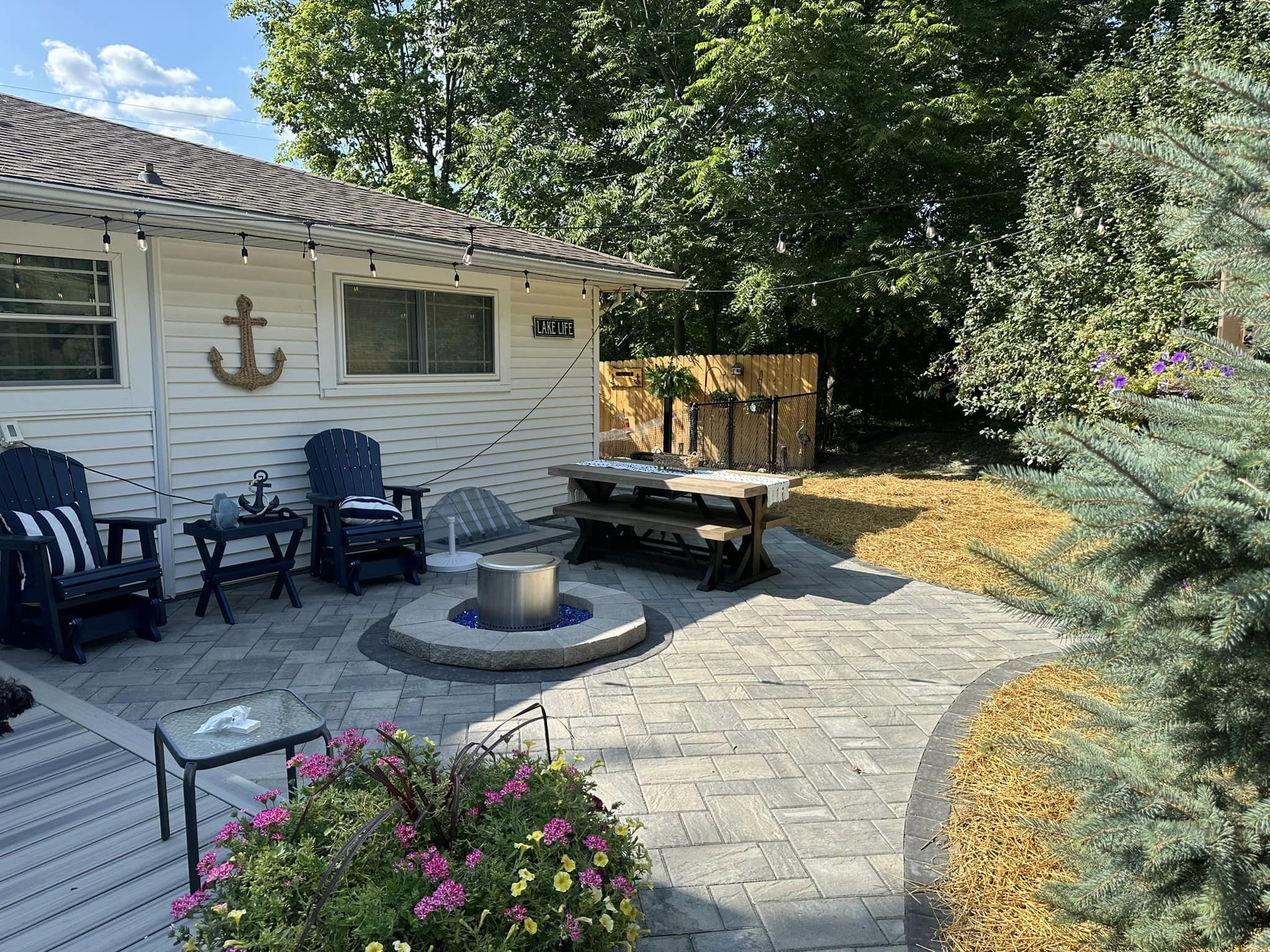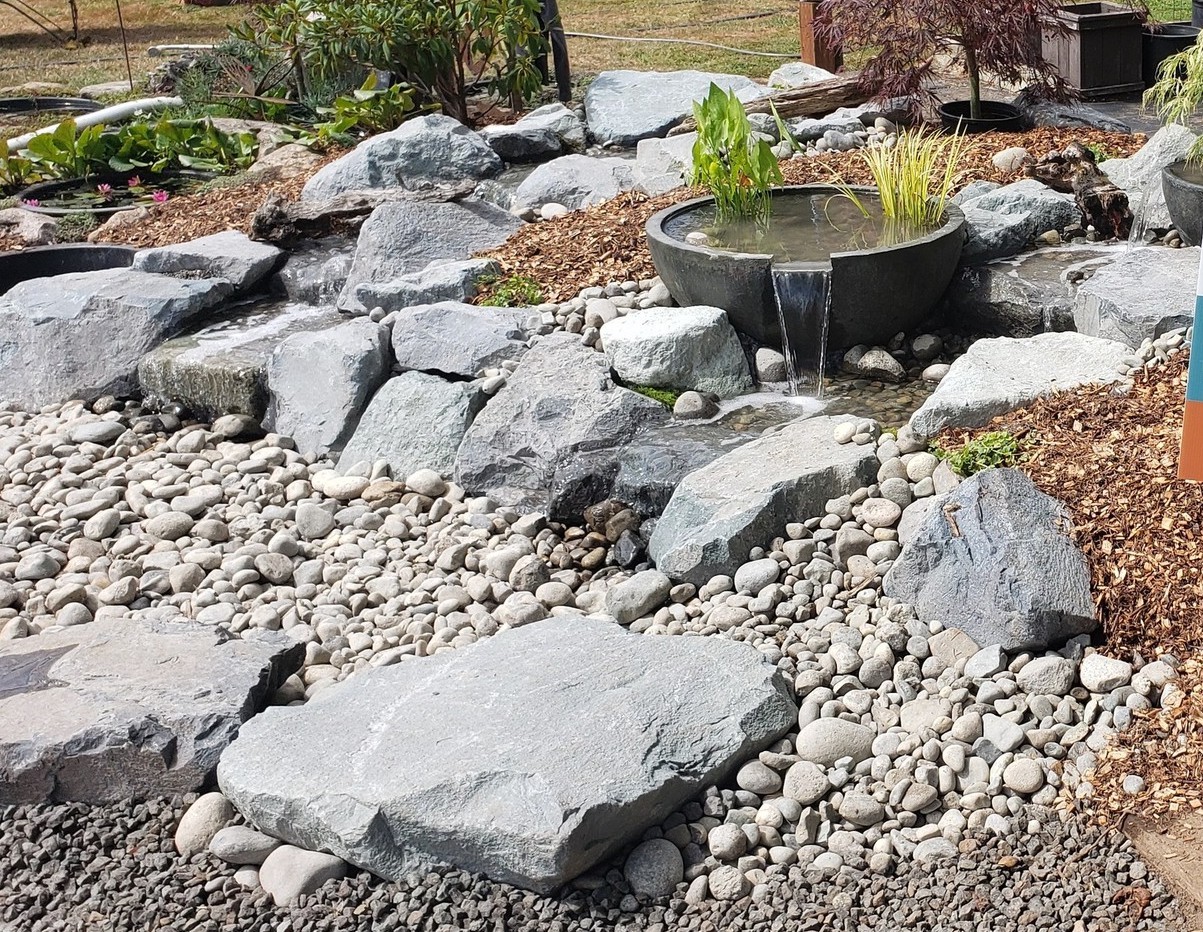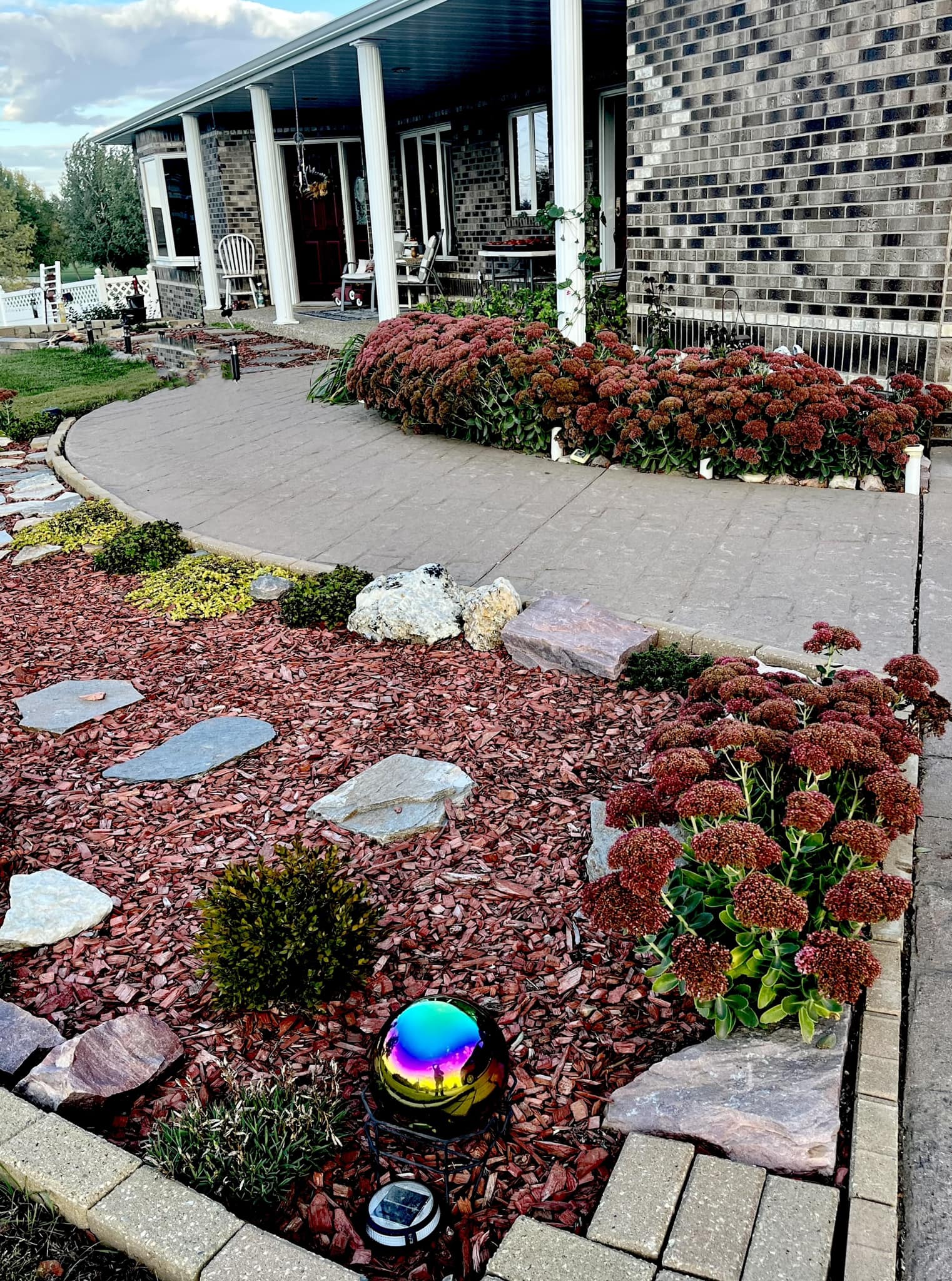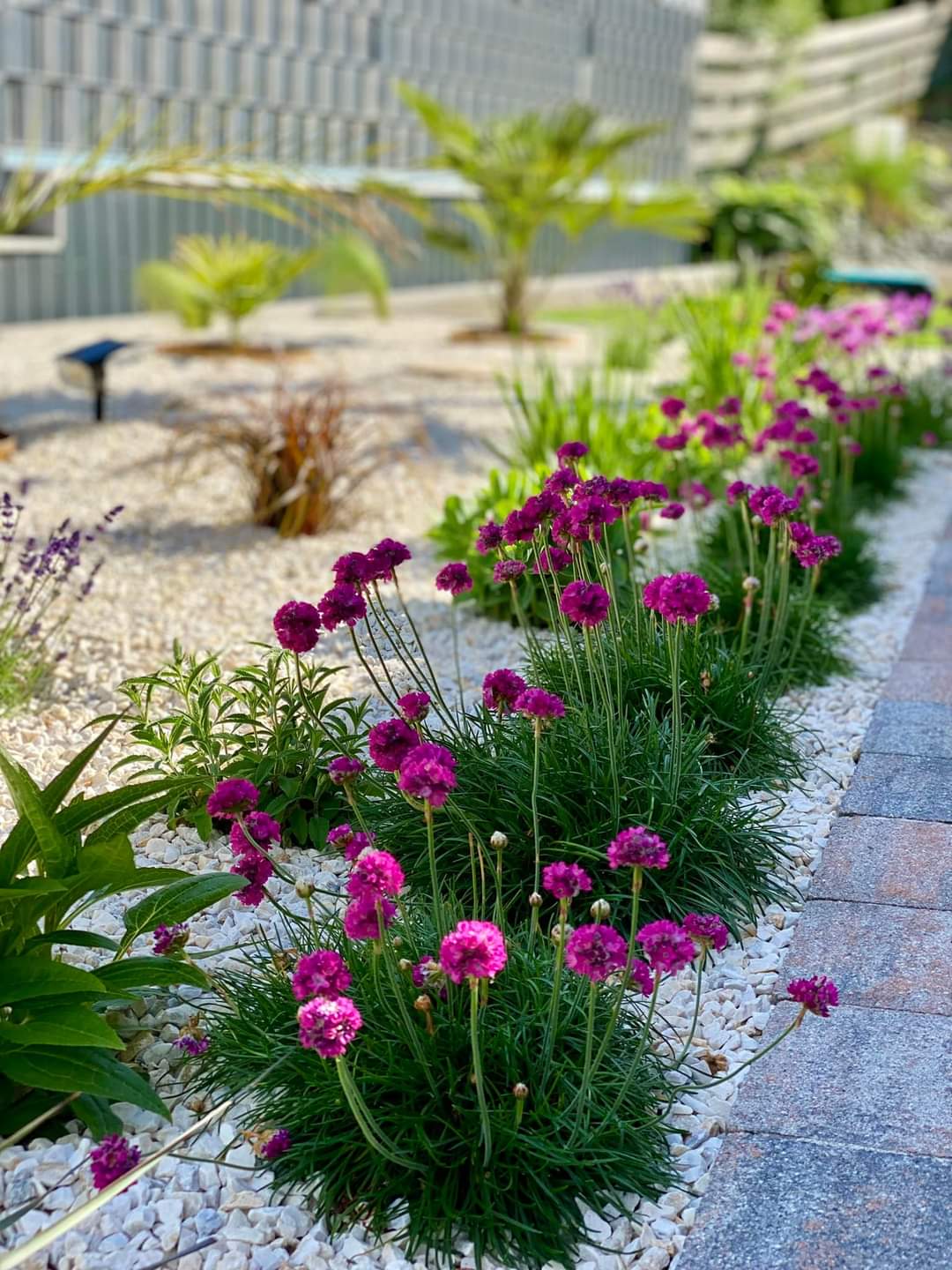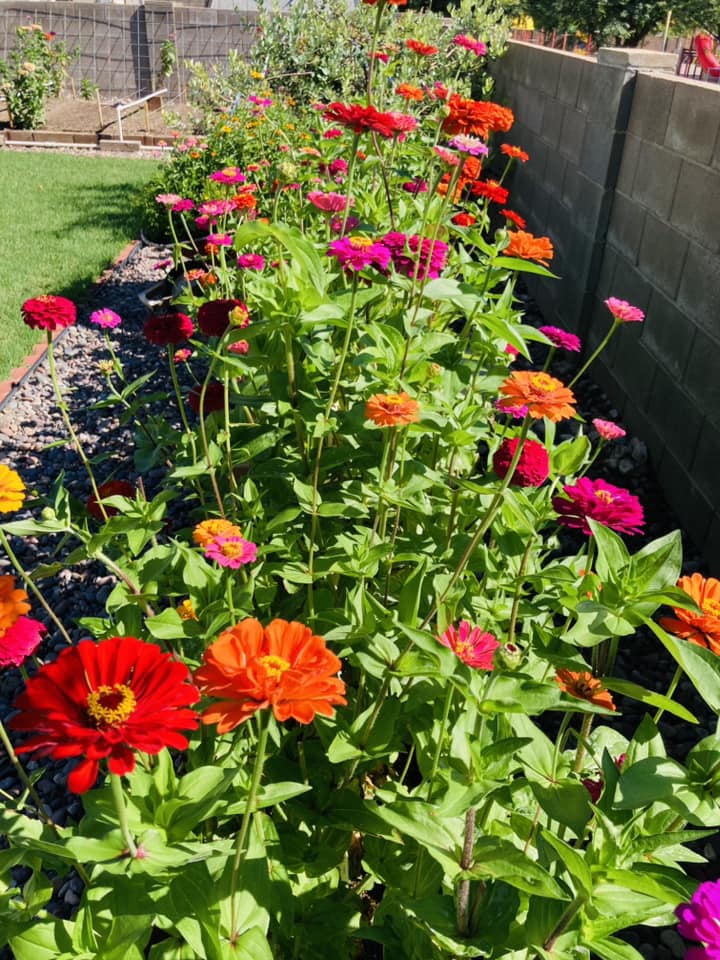On average, households use about 100,000 gallons of water annually for outdoor use, with garden and lawn irrigation taking the largest portion. Considering that water is increasingly becoming an expensive and scarce resource, the popularity of water-wise landscaping, like opting for xeriscaping, is on the rise.
Xeriscaping offers water-efficient, stunning, minimalistic, and easy-to-care-for landscaping ideas. If you want to transform your yard into a beautiful space with less work and low water consumption, xeriscaping could be what you need.
Below are simple, budget-friendly xeriscape ideas you should consider.
11 Simple Xeriscape Ideas On A Budget
1. Opt For Ornamental Grasses and Ground covers
You must move away from the traditional grassy lawn to create a landscape that thrives with minimal water because they are water-intensive and high-maintenance. Instead, cover the ground with low-growing, soft groundcovers and ornamental grasses.
These plants are low maintenance, require less water, and spread across the ground quickly, providing a green, living carpet. You’ll only need to trim them once a year to keep your outdoor spaces looking pristine.
Groundcovers to consider include creeping thyme, dymondia, creeping phlox, low-lying sedum, and wooly yarrow. Incorporate ornamental grasses for movement, texture, and vertical interest into your xeriscape. Excellent ornamental grass choices include blue fescue, muhly, and feather reed grass.
When designing your xeriscape landscape with groundcovers and ornamental grasses, pair different textures and colors to create visual interest. For instance, feather reed grass’ fine, feathery plumes would look stunning with creeping thyme’s dense, matted look.
2. Install Artificial Turf
Are you looking for a green, maintenance-free lawn that doesn’t need watering? Artificial grass is the answer. Since you don’t need to water artificial turf, this xeriscaping idea suits regions with water restrictions or drought conditions.
You also don’t need to mow, fertilize, or weed artificial turf, thus reducing both time and costs. Also, regardless of weather conditions, the areas with synthetic turf stay green throughout the year.
Consider artificial grass for high-traffic areas such as play areas, pet zones, and high-use spaces because it can withstand heavy foot traffic. Installing artificial turf comes with a higher upfront cost compared to other xeriscaping options, but consider the long-term savings.
Artificial turf is a cost-effective choice because you don’t need to water, maintain, or use lawn care products. You also don’t need to replace it as frequently as traditional lawns.
You can lower the initial cost by installing artificial turf in phases. Start with high-use or visually prominent areas and then gradually expand to other regions.
3. Use Native Grasses
Consider planting native grasses instead of installing artificial turf if you prefer a more natural look. Native grasses are inherently drought-tolerant and well-suited to the local environment. Once established, native grasses require little maintenance and require minimal irrigation.
Examples of common native grasses are switchgrass, buffalo grass, blue grama, little bluestem, sideoats grama, and purple needlegrass. Mix different native grasses to create a naturalistic meadow or prairie. Also, define borders or edges using taller grasses like little bluestem.
4. Add Succulents or Cacti
These plants are popular for xeriscaping because they store water, facilitating their survival with minimal water. These plants require little care as well, requiring infrequent watering.
Many of these plants maintain their vibrant colors and exciting forms throughout the year. You can plant succulents and cacti in a rock garden, vertical garden, borders, and containers.
Succulents you should consider for xeriscaping include sedum, echeveria, agave, and aloe vera. On the other hand, consider the Saguaro Cactus, Cholla Cactus, Barrel Cactus, Golden Barrel Cactus, and Prickly Pear Cactus.
5. Opt For Hardscaping
Introduce hardscaping elements like stone and gravel to your xeriscape design to significantly reduce water usage and the need for mowing and pruning. Hardscaping elements last long, and weather conditions do not make them deteriorate.
Also, since they come in different textures, colors, and materials, they make areas visually appealing. Create pathways with decomposed granite, stepping stones, or gravel. You can also make a patio using permeable pavers, flagstone, or gravel and edge it with native plants or succulents.
Make sure the hardscaping materials you use complement the colors of your plants. For example, pair warm-toned stones with rich green and brown native grasses. In contrast, cool-toned gravel pairs well with vibrant succulents.
6. Create A Rock Garden
Give your outdoor spaces a natural, rugged beauty by developing a rock garden. Position large rocks, arranging them in a way that creates varying heights and levels. After that, plant drought-resistant plants in the spaces between the rocks. Ideal choices are cacti, succulents, and drought-resistant wildflowers and herbs.
Don’t forget to add colorful, low-growing ground covers and watch them spill over the rocks and soften your garden’s edges. Also, give your garden some personality by introducing decorative elements such as a small birdbath, a stone bench, or a garden statue.
Once established, just rain will keep the plants in your rock garden thriving. However, until then, water them sparingly, especially during the first few months. Regularly weed your rock garden and trim back any overgrown plants.
Read More: White Stone Landscaping Ideas For Yard
If working with a small budget, start with a small rock garden and gradually expand.
7. Water Efficiently
The ultimate goal of xeriscaping is to minimize water consumption, but even drought-tolerant plants need water. Fortunately, you can reduce water consumption through efficient watering techniques. By watering efficiently, you minimize runoff and lower the frequency of irrigation.
Techniques to help use water in your garden efficiently include:
- Drip irrigation: This system is suited for irrigating individual plants. It ensures the root zones get water directly.
- Soaker Hoses: The porous hoses release water slowly along their length. Consider it for watering garden beds and borders. You can move your soaker hose around as needed.
- Hand Watering with Precision: This technique is best for watering new plants, spot-treating dry areas, and delicate plants. Use a nozzled hose or a narrow spout watering can.
8. Harvest Rainwater
Harvesting rainwater will reduce your dependence on municipal water, which, in turn, will significantly lower your water bills. Your roof is the best place to harvest rainwater since it provides a large surface area for water collection.
Position your barrel, cistern, or tank close to the downspout. Rainwater is healthier for plants compared to tap water.
9. Mulching
Mulching is vital for xeriscaping as it slows evaporation, keeps the soil cool, and reduces weeds. Organic mulches, like wood chips and straw, are ideal for hot, dry climates because they help retain moisture and cool the soil.
If you live in a cooler climate, inorganic mulch like gravel or rock may be more suitable since it will help absorb heat during the day and release it at night, keeping the soil warm. Go for organic mulch for a more natural look and inorganic options for a sleek, modern appearance.
Select a mulch that complements the needs of your plants. For example, if you plant succulents and cacti, use inorganic mulches like gravel or crushed rock.
10. Plant Perennials
These plants offer beauty and resilience and are low maintenance. For xeriscaping, choose drought-tolerant perennials that do well in your local climate and won’t need much water once established.
Mix perennials with varying colors, textures, and heights. Excellent choices for xeriscaping are lavender, Russian sage, yarrow, blanket flower, coneflower, verbena, blue false indigo, and shasta daisy.
11. Consider Annuals
If you intend to change the look of your garden from year to year, consider planting annuals as they grow, flower, set seed, and die within a single year. Beautiful annuals you can consider to elevate your xeriscape garden include marigolds, California Poppy, and African Daisy.
Final Remarks
Xeriscaping is achievable regardless of your budget or location. Carefully plan your design, choose the right plants, and incorporate hardscaping and water-efficient practices. With these, you can create a beautiful, low-maintenance garden that flourishes in dry conditions without draining your wallet. Doing everything at once isn’t necessary; you can tackle one area at a time.

Hey there, I’m Derek Schew, a writer for Lawnholic.com, where we cover everything and anything related to lawns. As someone who’s spent countless hours tending to my own lawn, I’m passionate about sharing my knowledge and helping others achieve the perfect yard. From lawn care tips to product reviews, I’m committed to providing our readers with the most accurate and up-to-date information available. So whether you’re a seasoned lawn enthusiast or just getting started, I invite you to join our community and discover the joys of a lush, green lawn.


